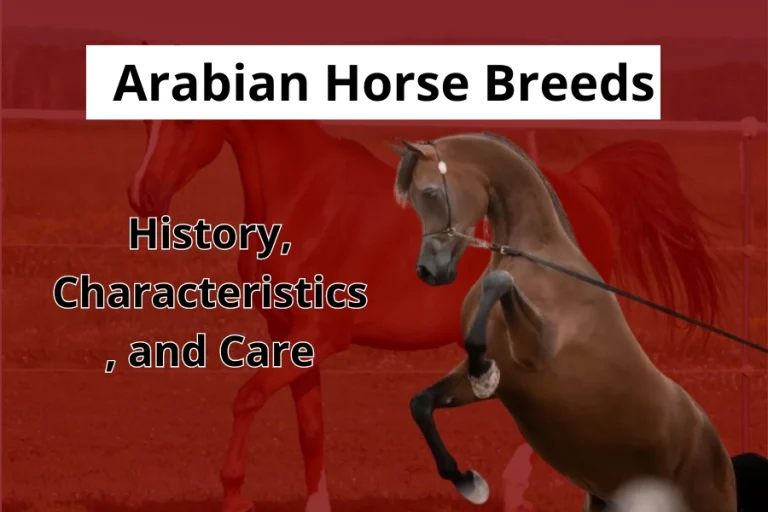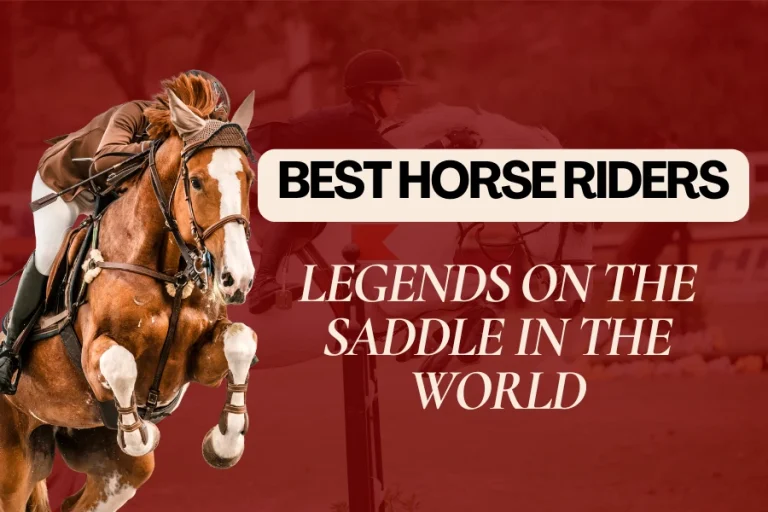The Top Famous Race Horses Of All Time
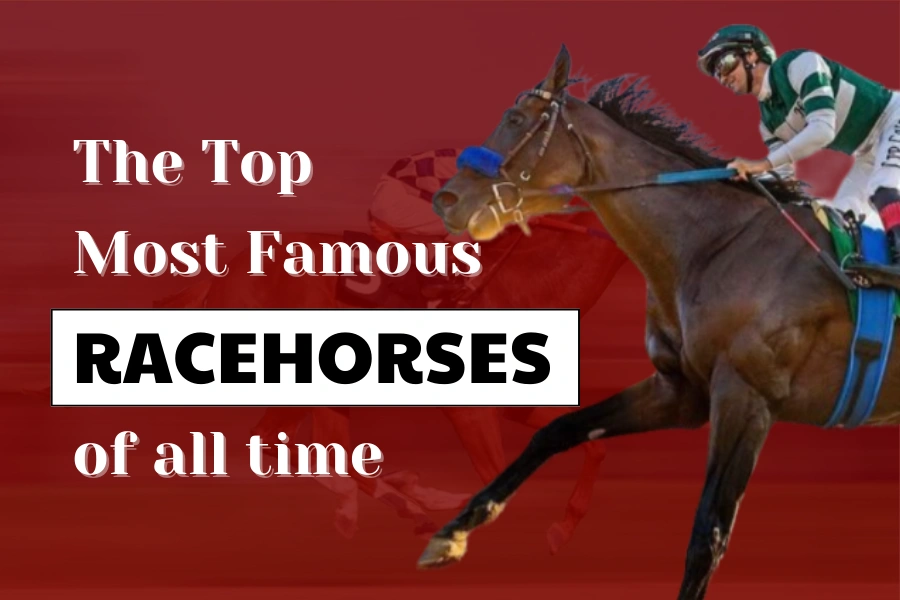
Horse racing is one of the oldest sports, attracting fans and bettors worldwide. Throughout history, there are many debates about who is the most famous race horse of all time with many outstanding candidates mentioned. However, these debates have never ceased. Each horse stands out with its unique achievements, from consecutive victories and historic feats to undefeated careers and fame that extends beyond the racetrack.
Now, explore the list of the most famous race horses of all time and discover what makes these legendary horses so successful and famous.
The top most famous race horses of all time
Secretariat
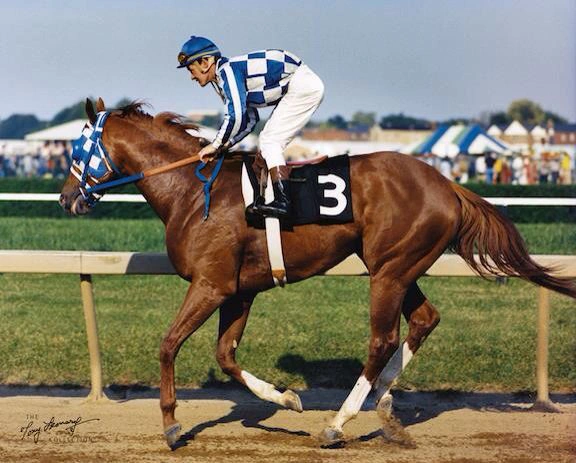
Secretariat ( March 30, 1970) is one of the most famous race horses of the end of the 20th century. He is a tall horse; therefore, people often call him ‘Big Red’ because of his bright chestnut coat.
Some believed that he was ‘too pretty’ to be a good race horse, Secretariat proved them wrong in his first season in 1972. In 1972 Secretariat raced at two years of age and he went through 8 consecutive races without defeat.This was very special and made him Horse of the Year, an honor that up to then only one other young horse had achieved at that time. The next year, in 1973, was even better. Secretariat became even more famous with the title 9th Champion of the American Triple Crown of Thoroughbred Racing: Kentucky Derby, Preakness Stakes, and Belmont Stakes. Over a 16-month racing career, Secretariat achieved many amazing feats: won 16 times, 3 second places, 1 third place; earned a total of $1,316,808; Many of his records still stand unmatched today
Secretariat unfortunately died in 1989 of a severe hoof condition known as laminitis. After his death, he was honored in many ways: the movie “Secretariat” in 2010, there are Secretariat streets in California and New Jersey; statues, postage stamps, etc. Secretariat is also one of the three non-human subjects in ESPN’s list of “The 100 Greatest Athletes of the 20th Century”.
Man o’ War
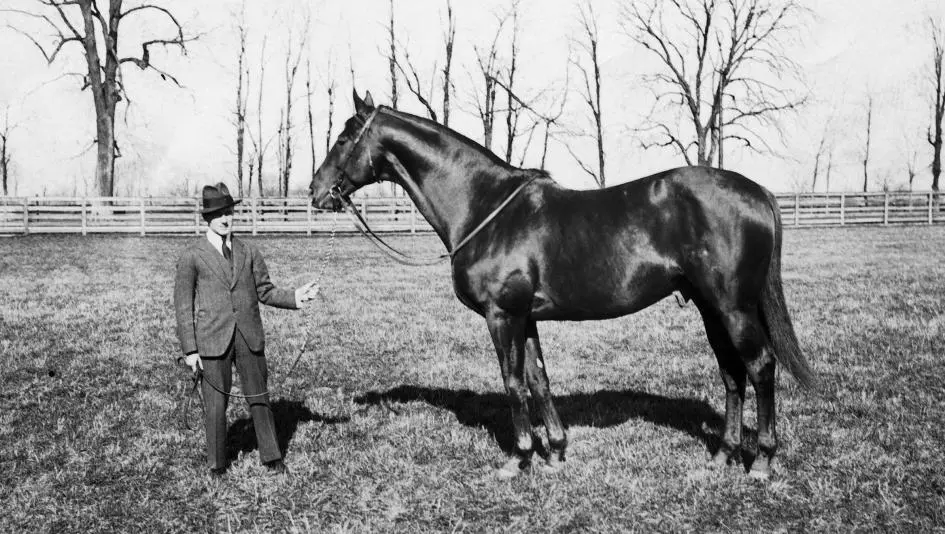
Man o’War, a legendary race horse, is considered one of the most famous race horses of all time. Born in 1917, Man o’War was the 15th generation descendant of the Godolphin Arabian breed, one of the rarest horse breeds in the world. Man o’War ran his first race on June 6, 1919 at just two years old. Soon after, he made a significant impression on fans by winning 20 out of 21 races within just 16 months. His only defeat came at the hands of Upset in the Stanford Memorial Stakes, but this did not diminish the “Man o’War fever.” At that time, many believed that he revived horse racing in the United States.
Although Man o’War missed the chance to win the Triple Crown, he still achieved many impressive accomplishments. He was honored American Horse of the Year in 1920, American champion 2-year-old male in 1919, and American champion 3-year-old male in 1920; also held U.S. records for the fastest times over distances of 11/8 miles, 13/8 miles, and 1 5/8 miles.
Man o’War became a breeding stallion and created over 64 famous race horses, including War Admiral after retiring.
Seabiscuit
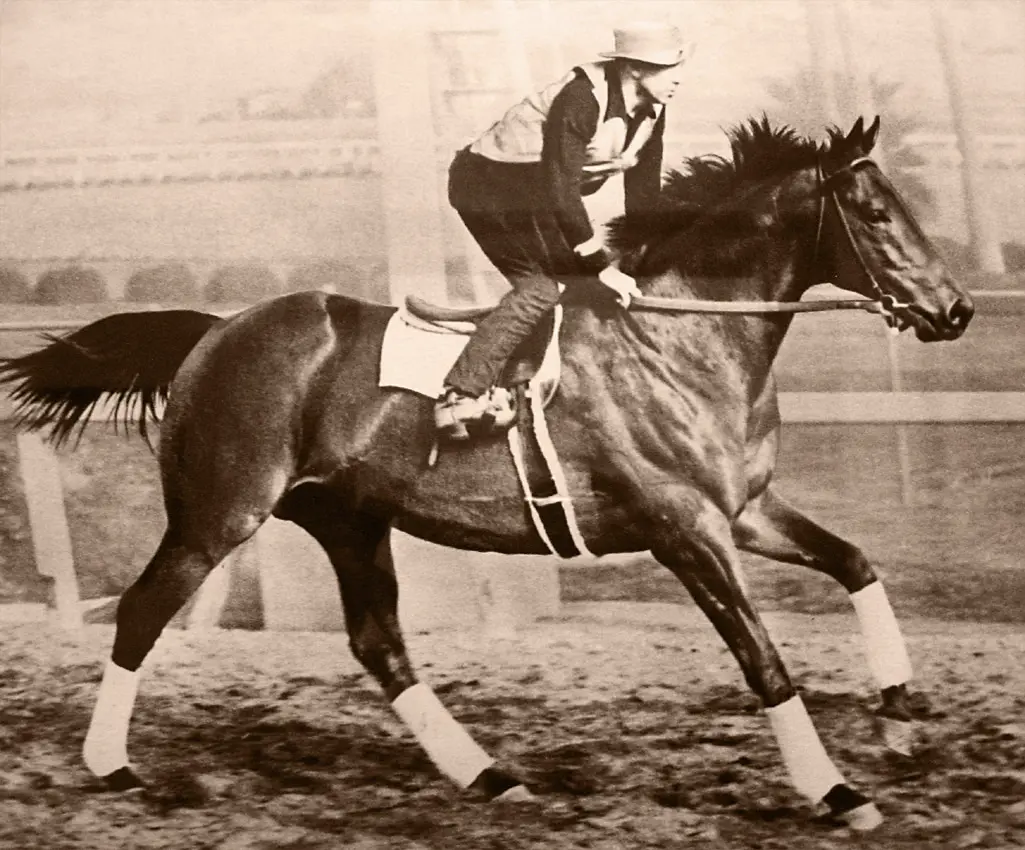
Seabiscuit was a race horse widely known for his story of going from the unknown to the most celebrated figure of his time. Initially, Seabiscuit was not highly regarded due to his unimpressive outlook: quite smaller than other competitors, mild-mannered, and had an awkward gait, with no notable achievements. It could be said that Seabiscuit was not a naturally gifted race horse. He began his racing career at two years old, but it was not smooth sailing as he consistently lost, finishing last in his first 17 races.
However, everything changed dramatically. Fortunately, the renowned trainer Tom Smith saw Seabiscuit’s potential and decided to buy him. This was a major turning point in his lackluster career. In the following year, Seabiscuit and his partner, Red Pollard, won 11 out of 15 races. Moreover, Seabiscuit’s fame increased to its peak when he defeated War Admiral – the 1937 Triple Crown winner in the race “The Match of the Century.” Throughout his career, the famous race horse achieved many high honors, including American Horse of the Year (1938) and American Champion Handicap Male (1937, 1938).
Seabiscuit’s victories inspired millions of Americans during the darkest economic period in the country – the Great Depression. And that is why Americans viewed Seabiscuit as the “nation’s hope”. That’s understandable! Rising from an unknown to achieving spectacular victories is undeniable.
Red Rum
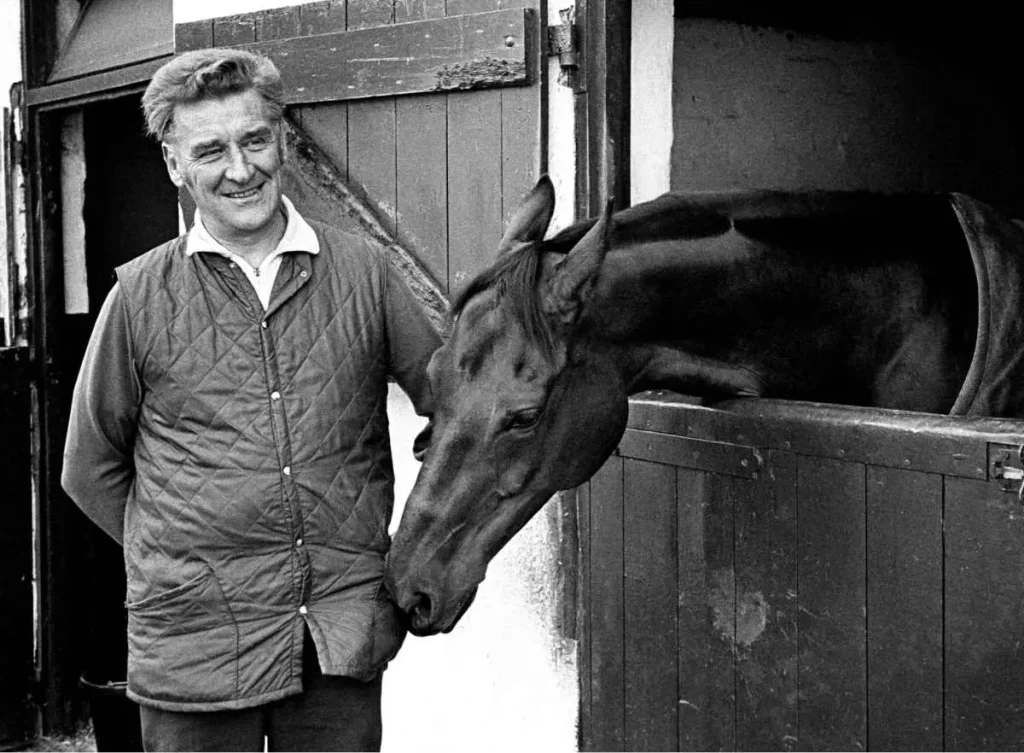
Red Rum is one of the most famous race horses in history with his great achievements in the Grand National which is one of the toughest steeplechase races. From a young age, Red Rum faced a debilitating bone disease in his foot. For race horses like Red Rum, such a condition is almost a death sentence and could have ended his racing career. However, for Red Rum, this disease was just another obstacle to overcome. Anh, of course, he is the best. Ginger McCain trained Red Rum on sand and shallow sea water at Southport in Merseyside. This routine helped Red Rum overcome his hoof disease and become a legend.
Red Rum won the Grand National three times in 1973, 1974, and 1977. To this day, he is the only thoroughbred to win the famous steeplechase race three times in a row. With his jumping ability, Red Rum never fell in 100 races, won 26 races, and earned £146,410.
Black Caviar

Black Caviar deserves to be on our list of the top most famous race horses of all time. In fact, you will be surprised to realize that there are very few racehorses that have remained unbeaten to their owners throughout their racing careers. That is exactly what Black Caviar did!
Black caviar began horse racing in 2009 and up to the time she retired the year 2013, she participated and won 25 races. She received International Federation of Horseracing Authorities – the best sprinter in the world from 2010 to 2013. Some other media in both Australia and foreign have described her as “the world’s most famous race horse.”
After Black Caviar won three races at Flemington Racecourse, the Victoria Racing Club honored her by renaming the “Lightning Stakes” race to Black Caviar Lightning.
The fame of Black Caviar does not only end in Australia, but it has made a way to the international world. 2012 was the year when she was able to race in the Diamond Jubilee Stakes and even compete in the Cartier Racing Awards. After that, she is better known in Europe as the European Champion Sprinter. Indeed, Black Caviar is the first foreign horse (non-European horse) to receive this honor.
Since retiring, Black Caviar has continued her legacy as a broodmare with offspring such as Prince of Caviar, Out Of Caviar, Ready For Caviar, and Invincible Caviar.
Citation
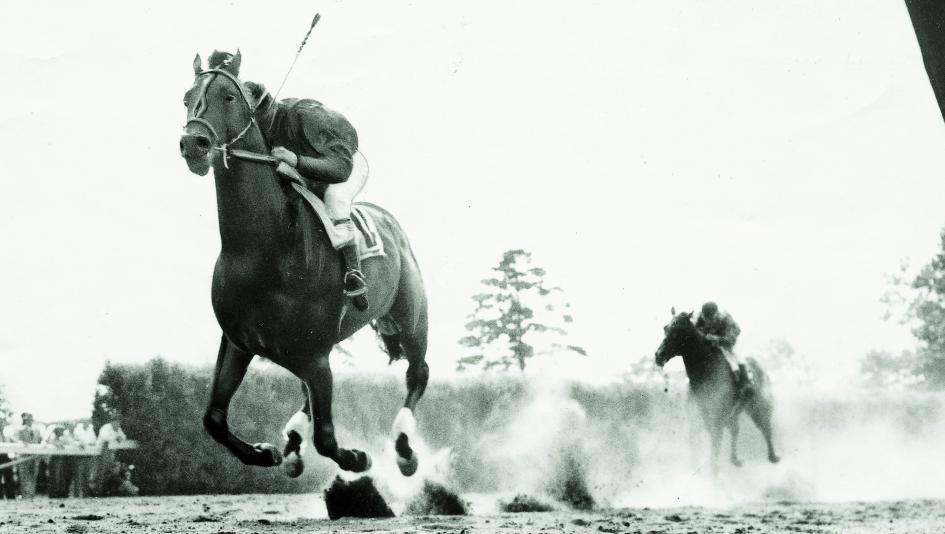
The next famous race horse is Citation – the 8th North American Triple Crown champion in 1948. After his remarkable victory, it took 25 years for the world to witness another memorable moment one more time. It means that in one quarter of a quarter century, no one did it again, until Secretariat emerged. Trained by Ben Jones and his son Jimmy Jones, Citation didn’t just stop at the Triple Crown winner; he continued to win many other important races and awards. He was one of the youngest champions at age two and was named Horse of the Year in 1948. He won the Hollywood Gold Cup and achieved a total of 32 victories in his racing career.
The year 1948 was a shining moment for Citation. Unfortunately, he had to take a break for about a year due to a leg injury. In 1950, Citation returned to racing and once again proved his dominance in the racing world.
Citation was also inducted into the National Museum of Racing and Hall of Fame in 1959, and a life-sized statue of the champion was erected in his honor at Hialeah Park in Florida.
What makes a winner?
If you’re a fan of thrilling races, you’ll undoubtedly want to turn your race horse into a world-renowned figure with an unbeatable track record. To start, you must choose a good race horse. A great race horse not only possesses impressive speed but also requires a harmonious combination of multiple factors. These include a strong pedigree, optimal bone structure for endurance, well-developed muscle tone for power, balanced physical proportions, fluid movement at all speeds, and a calm yet alert behavior that conserves energy for the race. Each of these elements contributes to the overall potential of a race horse to succeed in the highly competitive world of horse racing.
Pedigree: As horses from famous racing pedigrees often inherit exceptional traits like speed, strength, and endurance. We’re pretty sure that anyone would want to own a horse descended from one of the famous race horses above.
Bone structure: Bone structure significantly impacts a race horse’s endurance and stability. The legs should be straight and solid from the chest to the hoof, reducing stress on the joints, especially the knees. There should also be sufficient space between the forelegs and the chest to facilitate effective heart function. And the hooves must be inspected to ensure they can support the horse’s weight without causing additional joint pressure.
Muscle tone: Particularly in the hind legs and shoulders, is crucial for strength and progression in race horses. The hind legs provide the main propulsion, while shoulder muscles enhance mobility, directly affecting performance and endurance.
Balance: a race horse should have equal lengths of neck, back, and hips for symmetry.
Movement: A good horse should be smooth at all horse speeds, including walking, trotting, and if possible, cantering and galloping. Also, owners have to observe the horse’s stride and listen to its breathing to gauge its effort level. Horses with longer strides usually have an advantage as they cover more ground, though this isn’t always necessary if they are exceptionally fast.
Behavior: If you choose a calm horse, it usually focuses better and conserves energy throughout the race. In contrast, nervous or excitable horses may deplete their energy prematurely, which can make their behavior unpredictable during the race.
Conclusion
Over thousands of years of horse racing history, only a few horses have become legends, not just because of their impressive victories but also due to their lasting impact on the sport. The greatest race horses of all time have left a profound mark on the hearts of fans with their extraordinary talent and indomitable spirit.

